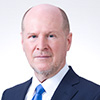It would not be surprising if the major swings in the markets and macroeconomic conditions, including historic central bank shifts, have made most investors somewhat seasick. Recently on a day-to-day basis, markets seem to react quite irrationally, but the overall backdrop is fairly clear: the markets are getting accustomed to one of the most rapid and major shifts in Federal Reserve policy ever in its history. Combined with the guidance of imminent hikes and QT, there has been nearly 250 bps of implied tightening for 2022, and almost as much for 2023, all within the last month or so. The Fed was behind the curve, and has even come close to admitting such, so it knows that it needs to catch up fast. The uncertain economic outcomes of COVID variants and the way the pandemic has changed labour force participation were major reasons for the Fed to be cautious about tightening, so it is unfair to be too critical with 20/20 hindsight. However, its new inflation-overshooting policy, coupled with various policies that have restrained oil production, has emboldened commodity speculators, especially when any shortages arose, and overall purchasing philosophy strongly in an inflationary direction. In other words, the inflation policy worked so well that it has engrained an inflationary psychology, including wage demands that are leading to second round inflationary effects. For this reason, some of today’s inflation is temporary, but quite a bit is not, and upward pressure remains.
Thus, the markets remain nervous about any further tightening that might be broadcast, but for the time being, it seems bonds and equities have priced in five 25 bps hikes in 2022, three more in 2023, and a few in 2024 to get the Fed funds rate close to a neutral rate. That seems a very long time to get to neutral, even assuming the CPI and its core rate decelerate to 3.0% by the end of the year, but one must also account for the tightening from QT of about USD 80–100 billion/per month starting around mid-year. Some bond market specialists are likely betting, given their pessimistically oriented asset class, that risk markets will not be able to absorb all this tightening, and, thus, bond demand will rebound. But given the recent risk asset stabilisation, with consensus forecasts of a 10-year UST at 2.2% by year-end, it is not likely wise to be bullish on bonds at present levels. Moreover, a geopolitical crisis does not necessarily help bond prices, as such could prove quite inflationary.
The positive aspect of inflation, especially when the economy is strong (helped by continued, if somewhat smaller, fiscal stimulus), is corporate pricing power. In aggregate, companies have been able to raise prices, usually based on the excuse of higher input costs and shortages, such that coupled with stronger unit demand, profits have risen handsomely. While such may moderate in 2022, corporate profit margins will not likely shrink, especially as the global economy, including China’s after its Olympics, should grow sturdily due to the continued exit from pandemic conditions. Indeed, consensus is for 10% profit growth for the S&P 500, which coupled with a gradually increasing bond yield, would allow, in my view, scope for continued US equity gains this year, although not likely attaining strong new highs and likely via a very rocky path. The forward P/E ratio at 20 is a moderate headwind for the US, but it is only about 13 times for Japan and 15 times for Europe, which have even lower interest rates. Meanwhile, during this earnings season, the 2022 EPS consensus forecast for the US has disappointingly risen less than 1%, that for Japan has risen a bit more than that and Europe’s by 2.5%. Dividend yields in the latter two are also much more compelling than the US, and now that much of the uber-growth facet of the US market has been tamed, solid valuations are much more meaningful. Of course, there will continue to be some excellent growth “winners” in the US, but such also exist in Japan and Europe.
Regarding typical value sectors, it is worth noting that Japanese financial stocks tend to benefit from higher US bond yields. Meanwhile, they are not facing the same kind of labour and technology cost pressure that US banks are, so their profit outlook seems even better than US financials—yet their valuations are much lower and have very high dividend yields. The lack of labour cost pressure, coupled with extremely minor internal supply chain and labour disruptions in Japan, should benefit nearly all sectors of the market. European banks face some cost pressure, including a rapid withdrawal of TLTRO benefits, but much less than those in the US. As for the highly value-oriented auto stocks, the global rebound in auto production, coupled with severe pent-up demand, will likely decrease profits per car later in 2H22, but production-linked profits should rebound for most Japanese and European producers for 2022.
Indeed, the long-awaited outperformance of EAFE vs the US will likely become reality in 2022. Above all else, however, is that reasonably priced, quality growth stocks, no matter their locale, are in our view the best way, as always, to invest in the intermediate term, which will likely be more true than ever in 2022.






